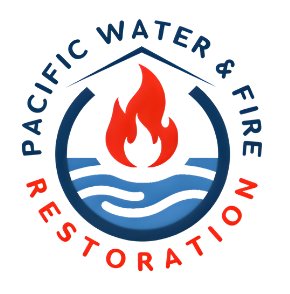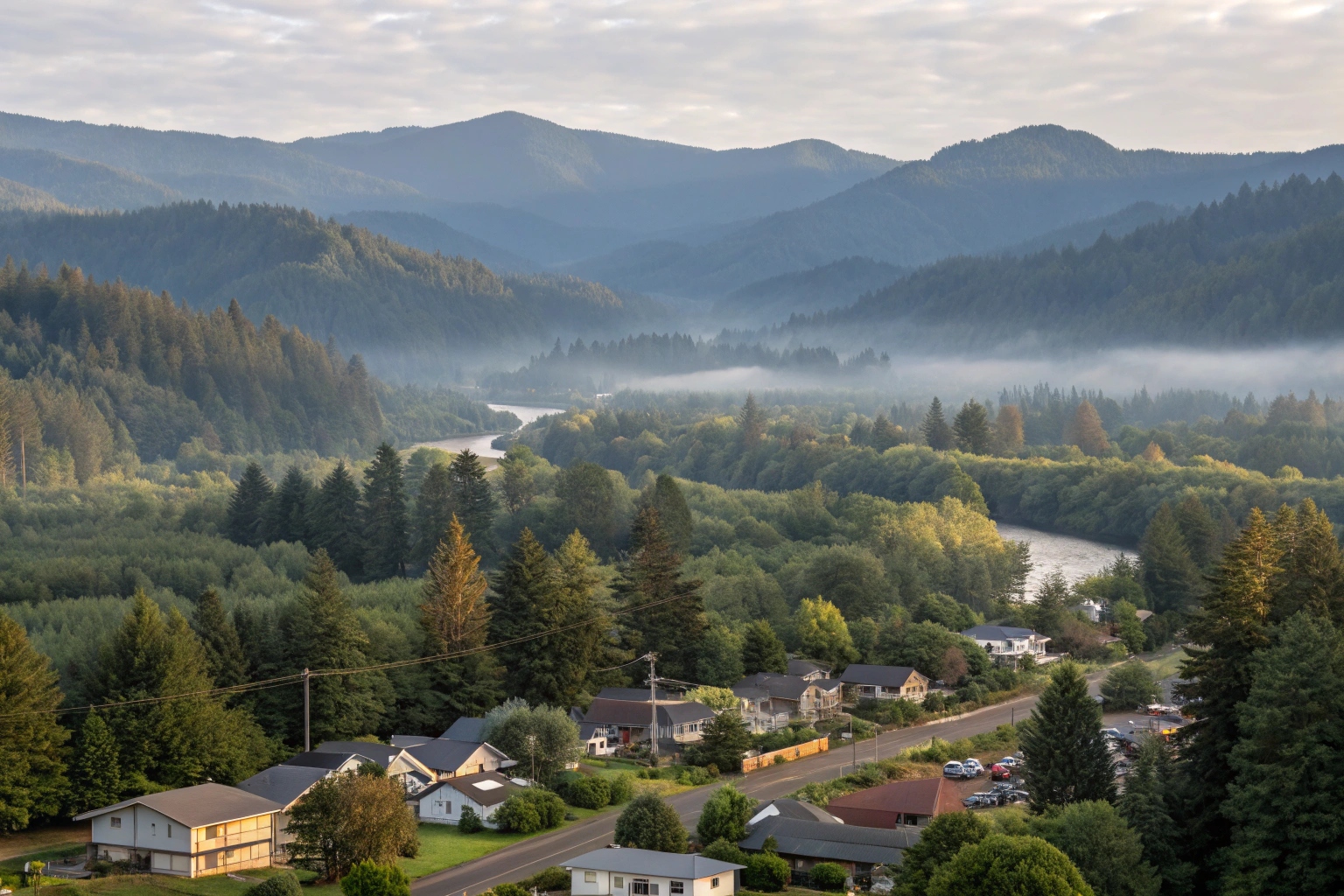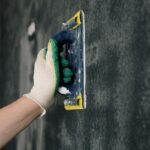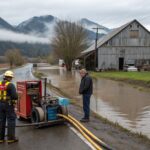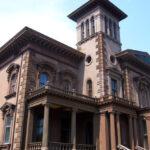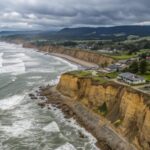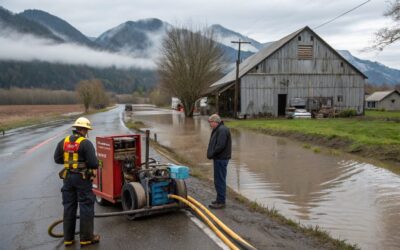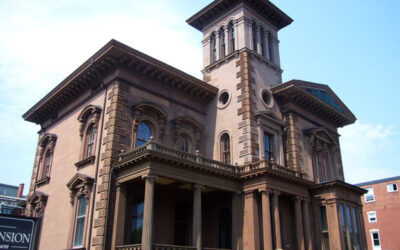Introduction: Forest Grove’s Unique Geography and Risk Profile
Nestled between the Coast Range mountains and the Tualatin River basin, Forest Grove enjoys a picturesque setting that defines much of Oregon’s natural beauty. However, this same geography that makes our community so attractive also creates a unique set of natural disaster risks that residents and business owners must navigate. From seasonal flooding and wildfire threats to the ever-present potential of a Cascadia Subduction Zone earthquake, Forest Grove faces multiple hazards that require thoughtful preparation and resilient response strategies.
At Pacific Water & Fire Restoration, we’ve helped countless Forest Grove property owners recover from various disasters. Through these experiences, we’ve developed a comprehensive understanding of how local geographical features influence disaster risks and recovery processes. This insight allows us to assist the community with both prevention and restoration efforts tailored specifically to Forest Grove’s needs.
The Multiple Hazards Facing Forest Grove Properties
Water-Related Risks: Rivers, Rainfall, and Runoff
Forest Grove’s proximity to the Tualatin River and its tributaries, combined with the area’s significant annual rainfall (averaging 45 inches per year), creates substantial flood risk. The city’s location at the base of the Coast Range means that during heavy precipitation events, runoff from higher elevations can quickly overwhelm local drainage systems.
Key Flooding Factors for Forest Grove:
- Proximity to Gales Creek and Tualatin River – These waterways can overflow during heavy rain events
- Urban development reducing natural drainage – As the community grows, more impervious surfaces increase runoff
- Seasonal patterns – November through February presents the highest flood risk with concentrated rainfall
- Snowmelt contributions – When winter snow in higher elevations meets warm rain events, rapid melting can worsen flooding
According to Oregon’s Department of Geology and Mineral Industries (DOGAMI), approximately 15% of Forest Grove properties lie within potential flood zones, with this percentage likely to increase with climate change projections.
Fire Risks: Where Urban Development Meets Forest Land
Forest Grove’s position at the interface between urban development and forestland creates what fire safety experts call the Wildland-Urban Interface (WUI). This boundary zone presents unique fire challenges, especially during Oregon’s increasingly dry summers.
Forest Grove Fire Risk Factors:
- Mixed land use – Residential areas border forest and agricultural lands
- Seasonal drought conditions – Summer dry periods are becoming longer and more severe
- Wind patterns – East winds from the Cascade Range can rapidly spread fires
- Limited evacuation routes – Some neighborhoods have restricted access points
The Oregon Department of Forestry classifies much of western Forest Grove as having “high” or “extreme” wildfire potential, a designation that has significant implications for property owners.
Seismic Concerns: The Cascadia Threat
While less frequent than floods or fires, the seismic risk to Forest Grove cannot be overstated. The city lies within the impact zone of a potential Cascadia Subduction Zone earthquake, which geologists estimate could reach magnitude 9.0 or higher. Forest Grove’s soil composition, with areas of loose sediment from ancient floods, presents additional concerns for liquefaction during seismic events.
Local Seismic Considerations:
- Building age – Many Forest Grove structures predate modern seismic codes
- Soil stability variations – Different neighborhoods have vastly different soil composition
- Critical infrastructure vulnerability – Water, power, and transportation systems may face extended disruption
- Secondary hazards – Landslides from surrounding hills could follow an earthquake
DOGAMI’s seismic risk assessment indicates that Forest Grove could experience significant damage to 30-40% of its buildings in a major Cascadia event, with recovery timelines extending months or even years.
Preparing for Multiple Hazards: A Comprehensive Approach
Property Assessment: Understanding Your Specific Risks
The first step in multi-hazard preparation is understanding the specific risks your property faces. Different locations within Forest Grove have dramatically different risk profiles.
Property Risk Assessment Checklist:
- Elevation relative to nearby waterways
- Distance from forested areas
- Building age and construction type
- Soil composition beneath your foundation
- Drainage patterns around your property
- Access to evacuation routes
Pro Tip: Consider scheduling a professional risk assessment for your property. Pacific Water & Fire Restoration offers free multi-hazard assessments for Forest Grove properties, examining structural vulnerabilities and site-specific concerns. Call us at 503-201-7337 to schedule yours.
Structural Modifications for Multi-Hazard Resilience
Certain improvements can significantly enhance a property’s resilience against multiple hazards. The goal is to identify modifications that provide protection against more than one threat.
Effective Multi-Benefit Improvements:
- Roof upgrades – Fire-resistant roofing materials also provide protection against wind damage and water intrusion
- Foundation reinforcement – Critical for seismic protection but also improves resistance to flood damage
- Improved drainage systems – Reduces flood risk while also directing water away from areas where it might compromise structural integrity
- Smart landscaping – Creates defensible space for fire protection while managing water flow during heavy precipitation
- Flexible connection points – Allow for building movement during earthquakes but also help manage stresses from soil expansion/contraction during wet/dry cycles
According to a Portland State University study, properties with multi-hazard improvements show 60-70% better outcomes across all disaster types compared to unprepared properties.
Essential Supplies and Equipment for Multiple Scenarios
Preparing for diverse emergencies requires carefully considered supply planning. The most efficient approach identifies items useful across multiple disaster scenarios.
Multi-Hazard Emergency Kit Essentials:
- Water filtration and purification tools – Useful for both earthquake disruptions and flood contamination
- Battery backup systems with solar charging – Maintains essential power across all disaster types
- Multi-frequency emergency radio – Ensures information access regardless of which systems fail
- Respiratory protection – Valuable during wildfires, post-earthquake dust, and flood cleanup
- Waterproof document storage – Protects essential records from all hazard types
- Basic tools – Adjustable wrench, pry bar, and fire extinguisher address immediate needs across disasters
Safety Warning: When storing emergency supplies, consider multiple storage locations. Having all supplies in a flood-prone basement or fire-vulnerable garage creates a single point of failure.
Forest Grove’s Community Resources for Disaster Resilience
Local Emergency Management Systems
Forest Grove benefits from a robust emergency management infrastructure designed to address the area’s multiple hazards.
Key Community Resources:
- Forest Grove Fire & Rescue – Provides both emergency response and preventative education
- Washington County Emergency Management Cooperative – Coordinates regional response across jurisdictions
- Community Emergency Response Team (CERT) – Trains residents in basic disaster response skills
- Pacific University’s Emergency Preparedness Program – Contributes research and volunteers during emergencies
The city’s emergency operations plan specifically addresses the interconnected nature of disasters, recognizing that events like earthquakes can trigger fires, while fires can lead to subsequent flooding due to vegetation loss.
Neighborhood Preparation Networks
Some of Forest Grove’s most effective disaster preparation happens at the neighborhood level, where residents coordinate resources and response plans.
Successful Neighborhood Initiatives:
- Block captain programs – Designate leaders responsible for checking on vulnerable residents
- Resource mapping – Identify neighborhood assets like generators, medical skills, or equipment
- Communication hubs – Establish locations where residents can gather for information if normal channels fail
- Shared equipment plans – Coordinate ownership of costly items like water pumps or chainsaws
The Oak Hill neighborhood’s preparation network demonstrated its value during the 2021 ice storm, when organized neighbors were able to clear roads and check on elderly residents before official resources arrived.
Real-World Example: Multi-Hazard Response in Forest Grove
Case Study: The Taylor Property Recovery
When the Taylor family purchased their 1940s Forest Grove home near Gales Creek in 2019, they didn’t realize they were inheriting vulnerabilities to multiple hazards. A series of events in 2020-2021 highlighted these risks but also demonstrated how integrated preparation can save properties.
Timeline of Events:
- September 2020: Wildfire smoke damaged interior air quality and HVAC systems
- December 2020: Heavy rains caused minor basement flooding and foundation stress
- February 2021: Ice storm damaged roof and created water intrusion points
After these challenges, the Taylors worked with Pacific Water & Fire Restoration to develop a comprehensive resilience plan. Key improvements included:
- Installation of foundation waterproofing and improved perimeter drainage
- Upgrading to a fire-resistant roof with enhanced ice dam protection
- Interior smoke damage remediation with improved air filtration
- Implementation of flexible pipe connections for seismic safety that also prevented breaks during ground shifting from flood saturation
Results: When atmospheric river events hit Forest Grove in November 2021, the Taylor property remained dry while neighboring homes suffered significant damage. The multi-hazard approach had created protection that addressed interconnected risks rather than treating each potential disaster in isolation.
Insurance Considerations for Forest Grove’s Multiple Hazards
Understanding insurance coverage for different disaster types is essential for Forest Grove property owners. Many are surprised to discover that standard policies may have significant gaps.
Critical Insurance Insights:
- Flood insurance requires separate coverage – Standard homeowners policies typically exclude flood damage
- Wildfire coverage may have limitations – Properties in high-risk zones may face higher premiums or coverage restrictions
- Earthquake insurance is almost always separate – And typically carries high deductibles (often 10-15% of property value)
- “Concurrent causation” issues – When multiple disasters happen in sequence, determining which policy applies can become complicated
Pro Tip: Document your property thoroughly before disaster strikes. Pacific Water & Fire Restoration recommends creating a video walkthrough of your property annually, storing documentation in cloud-based systems accessible from anywhere.
Conclusion: Building True Resilience Through Integration
Forest Grove’s unique position between mountains and rivers creates a distinctive risk profile that requires thoughtful preparation. Rather than addressing each potential disaster separately, the most effective approach recognizes the interconnected nature of these hazards and implements solutions with multiple benefits.
True resilience comes not just from stronger buildings, but from informed community members working together with professional resources. By understanding the specific challenges of our location and implementing appropriate strategies, Forest Grove residents can significantly reduce potential losses and speed recovery from whatever nature brings our way.
The multi-hazard approach acknowledges our community’s distinctive geography while building on its greatest strength: neighbors helping neighbors through challenging times.
How Pacific Water & Fire Restoration Can Help
As Forest Grove’s trusted restoration experts, we bring specialized knowledge of local hazards and effective mitigation strategies. Our services include:
- Free multi-hazard property assessments
- Preventative improvements to reduce disaster vulnerability
- 24/7 emergency response for water, fire, and storm damage
- Complete restoration services from initial mitigation through reconstruction
- Documentation assistance for insurance claims
Don’t wait until disaster strikes. Contact Pacific Water & Fire Restoration today:
- Emergency Services: 503-201-7337 (available 24/7)
- Schedule a Free Assessment: Visit pacificwaterandfirerestoration.com or call our office
- Learn More: Attend our monthly community preparedness workshops (details on our website)
Our IICRC-certified professionals are ready to help you protect what matters most.
Pacific Water & Fire Restoration is a full-service property restoration company serving Portland and surrounding communities including Forest Grove. With IICRC certification and 24/7 emergency response, we’re committed to helping property owners before, during, and after disasters strike.
